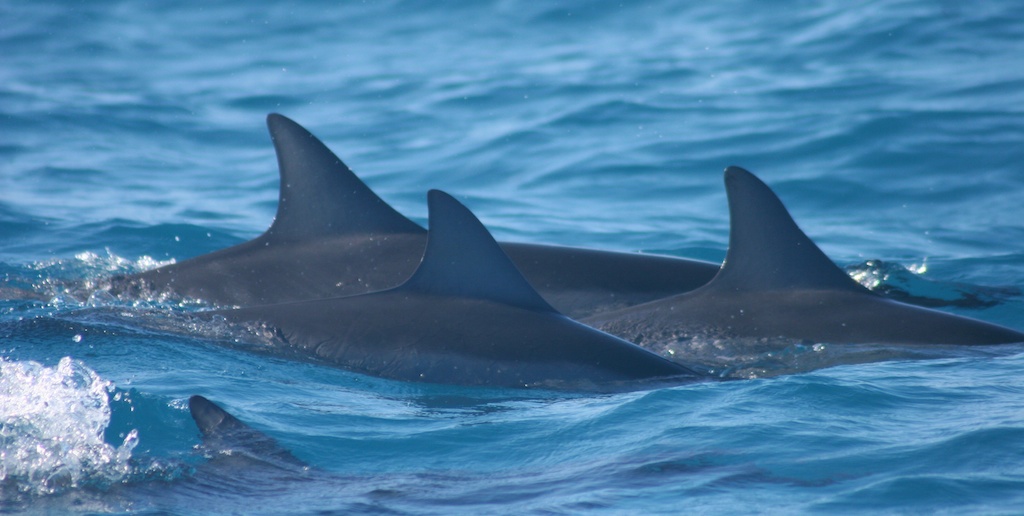From Norris to Now: Comparing historic and present-day spinner dolphin research

Hi folks, Heather Heenehan here. I’m a Duke CEM student working with the Johnston lab. For the past year I have been involved in the SAPPHIRE Project – Spinner Dolphin Acoustics, Population Parameters and Human Impacts Research. This project, based in Hawaii, is a joint effort between Duke University and Murdoch University. As the project name implies, SAPPHIRE aims to research human interactions with spinner dolphins in their resting bays through acoustics, photo identification and theodolite tracking. Since these resting bays are shallow, warm, coastal and extremely accessible to human users there are daily interactions between humans and dolphins. The fact that these interactions occur while the dolphins should be resting has led to concerns about the impacts of these interactions and how these interactions can be reduced.
Dr. Kenneth Norris was a pioneer in the field of marine mammal research, and spent a significant portion of his career studying spinner dolphins around the Island of Hawaii. In fact, because of his creative and comprehensive research approach, spinner dolphins were one of the best studied small cetaceans in the world during the late 1980s through the mid-1990s. Below I introduce the work I’m conducting for my Masters Project (MP) – a project that I hope will build on Norris and his colleagues work, and help address spinner dolphin conservation issues in Hawaii, and elsewhere.
From Norris to Now: A comparison of historic and present-day management and research on spinner dolphins
I spent the summer on the Island of Hawaii studying spinner dolphins on the Kona coast as part of the SAPPHIRE Project’s first field season. Through this experience and through my work for classes throughout these past two years (class projects, presentations and a trip to Midway Atoll this January!) I have learned a great deal about these dolphins. Through my research I have been able to place the issue of human interactions in resting bays in the context of spinner dolphin life history, acoustics, culture, history and policy – among others. For my Master’s Project I chose to research and explore various aspects of this “bigger picture” and present them to the general public through a set of short web articles. In each article I attempt to explain how our knowledge of each of the topics has developed and changed since the time that Kenneth Norris and his colleagues studied the population.
Through my research I have been able to place the issue of human interactions in resting bays in the context of spinner dolphin life history, acoustics, culture, history and policy – among others.
This was a very well-studied population from the 1970’s to the 1990’s and my goal is to take a look at this issue across time, to re-examine what Ken Norris and his colleagues saw while they studied these dolphins – and to see how things have or haven’t changed since that time. The articles on the website currently include the basics about these dolphins and this project and a video (also posted below) I made for about the dolphins with footage from my trip to Midway with the Marine Conservation Biology class. Some of the upcoming entries will include the policies behind the issue, the bays as a common pool resource, the sounds of the spinner dolphins and other topics. My hope is that with each you will learn a little bit more about various pieces of the spinner dolphin puzzle. I will be posting new articles on a regular basis this semester so please check back for updates.
http://www.nicholas.duke.edu/spinners/NtN-Folder
Mahalo (thanks) for reading! If there any topics related to this issue that you would find interesting or informative please let me know and I will do my best to address them.
Heather
ARVE Error: need id and provider
